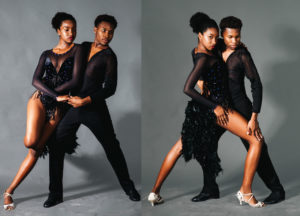
Put any hodge podge group together and you’ll find a few odd folks out—especially when the only thing bringing them together is an interest in salsa dancing! I’ve been there. The first time I seriously began taking salsa lessons, I was living in Seoul, South Korea. Yes, the studio was in Itaewon (where there was a big American presence thanks to the nearby military base), but there were also a number of classes where I was the only non-Korean student. Seoul, compared to many other Korean cities, also has a large population of English-speaking citizens. In other words, I was relatively “lucky” to be surrounded by people who were 1) used to seeing westerners and 2) oftentimes spoke at least a little English. Combine that with my very limited Korean, and we were often able to get some kind of dialogue going.
There’s one thing every odd dancer out has in common: They’re usually more aware of the difference than the rest of the class. It doesn’t matter if it’s because you don’t speak the language, you look different than others, you’re differently labeled, you have a different sexual orientation than what you perceive everyone else has, or anything else that marks you as different. Remember that just like you, everybody is there because they want to learn to be a better dancer. That’s it. And, just like math, dance has one big shared language that everybody understands. You’ll “get it” no matter how different you may feel.
Still, that’s little comfort when you arrive at class and instantly feel like an outsider. Here are some of the best tips to feel more at ease and better immerse yourself in a salsa dance class when you feel out of your element:
- Smile and say yes. It really is that simple. Everybody is attracted to a warm, friendly personality and simply smiling (even if you have to fake it at first!) eases your own internal stresses while encouraging others to approach you—because you seem more approachable. Simultaneously, practice saying yes as much as you can. Yes when people ask you to dance, yes when the instructor asks for volunteers, and yes to yourself when challenged to get out of your comfort zone. Make yourself stay for at least part of the after-class party, and extend those stays each time.
- Make the first move. You’re probably the most aware of your so-called difference, but in some cases others are taking note, too. That doesn’t mean they wish you weren’t there, though. Instead of waiting for others to approach you, take the plunge and make the first move. Introduce yourself, ask people to dance, and let everybody know you’re happy to be there. This can be especially tough in smaller classes where it seems like everybody knows everybody (and like you’re crashing a private party), but it’s better to dive right in. You’ll be surprised by how welcoming a class and studio will be.
- Focus on your similarities. Humans love to categorize themselves and each other. It’s how we make sense of our world, and it’s also a lot easier to judge a stranger than get to know them. Instead of focusing on what you feel makes you different, focus on the similarities you have with the rest of the class. For starters, you all have a shared love of salsa. As you change partners, delve a little deeper than the routine small talk and get to know your partners. You’ll quickly find some shared interests, and that’s what will make you feel like you’re part of the class.
- Be prepared to educate. Depending on the situation, you might be in a class where there are a lot of preconceived notions about who you are. That’s normal, and (fair or not) you might be put in an ambassador role. Educating and informing others is a big responsibility, and one that you can choose to take on (or not). You don’t have to educate people about what it means, to you, to identify as a certain sexual orientation, ethnicity, and so on, but you certainly can. Ask yourself whether this is a role you want to adopt as well as the role of salsa student.
- Talk to the instructor beforehand. This can be a great help and relieve a lot of stress. Set up a meet and greet with a new instructor beforehand to discuss any concerns or worries. They can give you a heads up about the class, what to expect, and can serve as a mediator if necessary. Your instructor wants you to be there, be successful and be comfortable so know that they’re always in your corner.
It’s always a little awkward to join a new class, and can be even more so when you feel like you don’t fit in. Don’t worry—everyone feels that way. Be open, be friendly, and you’ll soon find your stride in a new class. Plus, dance is a great way to immerse yourself in a new culture or community. Even ten years later, I’m friends with some of the fellow students I met in my Korean salsa class. It was a safe, fun space during a whirlwind year of new experiences. Even if you’re wary, challenge yourself to just go and be fully present while you’re there.

Leave A Reply